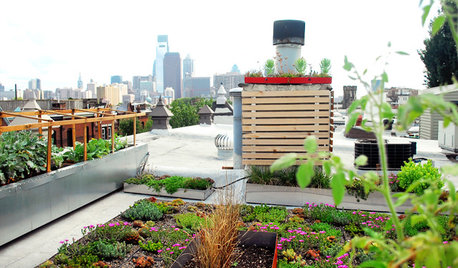Spray schedule link or help with spray for now
Dan.NY
11 years ago
Related Stories

MATERIALSInsulation Basics: What to Know About Spray Foam
Learn what exactly spray foam is, the pros and cons of using it and why you shouldn’t mess around with installation
Full Story
HOME INNOVATIONSNow Approaching the Emerald City
Urbanites are spraying moss graffiti on walls and covering roofs in plants — and city regulators and designers are supporting the cause
Full Story
BATHROOM WORKBOOKStandard Fixture Dimensions and Measurements for a Primary Bath
Create a luxe bathroom that functions well with these key measurements and layout tips
Full Story
WORKING WITH PROS3 Reasons You Might Want a Designer's Help
See how a designer can turn your decorating and remodeling visions into reality, and how to collaborate best for a positive experience
Full Story
PETSHow to Help Your Dog Be a Good Neighbor
Good fences certainly help, but be sure to introduce your pup to the neighbors and check in from time to time
Full Story
LIFE12 Effective Strategies to Help You Sleep
End the nightmare of tossing and turning at bedtime with these tips for letting go and drifting off
Full Story
SELLING YOUR HOUSE5 Savvy Fixes to Help Your Home Sell
Get the maximum return on your spruce-up dollars by putting your money in the areas buyers care most about
Full Story
PETS6 Ways to Help Your Dog and Landscape Play Nicely Together
Keep your prized plantings intact and your dog happy too, with this wisdom from an expert gardener and dog guardian
Full Story
FUN HOUZZ14 Things You Need to Start Doing Now for Your Spouse’s Sake
You have no idea how annoying your habits at home can be. We’re here to tell you
Full Story
ORGANIZINGDo It for the Kids! A Few Routines Help a Home Run More Smoothly
Not a Naturally Organized person? These tips can help you tackle the onslaught of papers, meals, laundry — and even help you find your keys
Full StoryMore Discussions








ltilton
Dan.NYOriginal Author
Related Professionals
Clark Landscape Architects & Landscape Designers · Fort Lee Landscape Architects & Landscape Designers · Panama City Landscape Architects & Landscape Designers · Roxbury Crossing Landscape Architects & Landscape Designers · Annandale Landscape Contractors · Bainbridge Island Landscape Contractors · Bergenfield Landscape Contractors · Brookline Landscape Contractors · Broomfield Landscape Contractors · Lynn Landscape Contractors · Mastic Beach Landscape Contractors · Pahrump Landscape Contractors · Paso Robles Landscape Contractors · Rochester Landscape Contractors · Tinton Falls Landscape Contractorsmegamav
alan haigh
blackrag
megamav
alan haigh
mjmarco
steseaq
alan haigh
strobiculate
ltilton
alan haigh
olpea
megamav
alan haigh